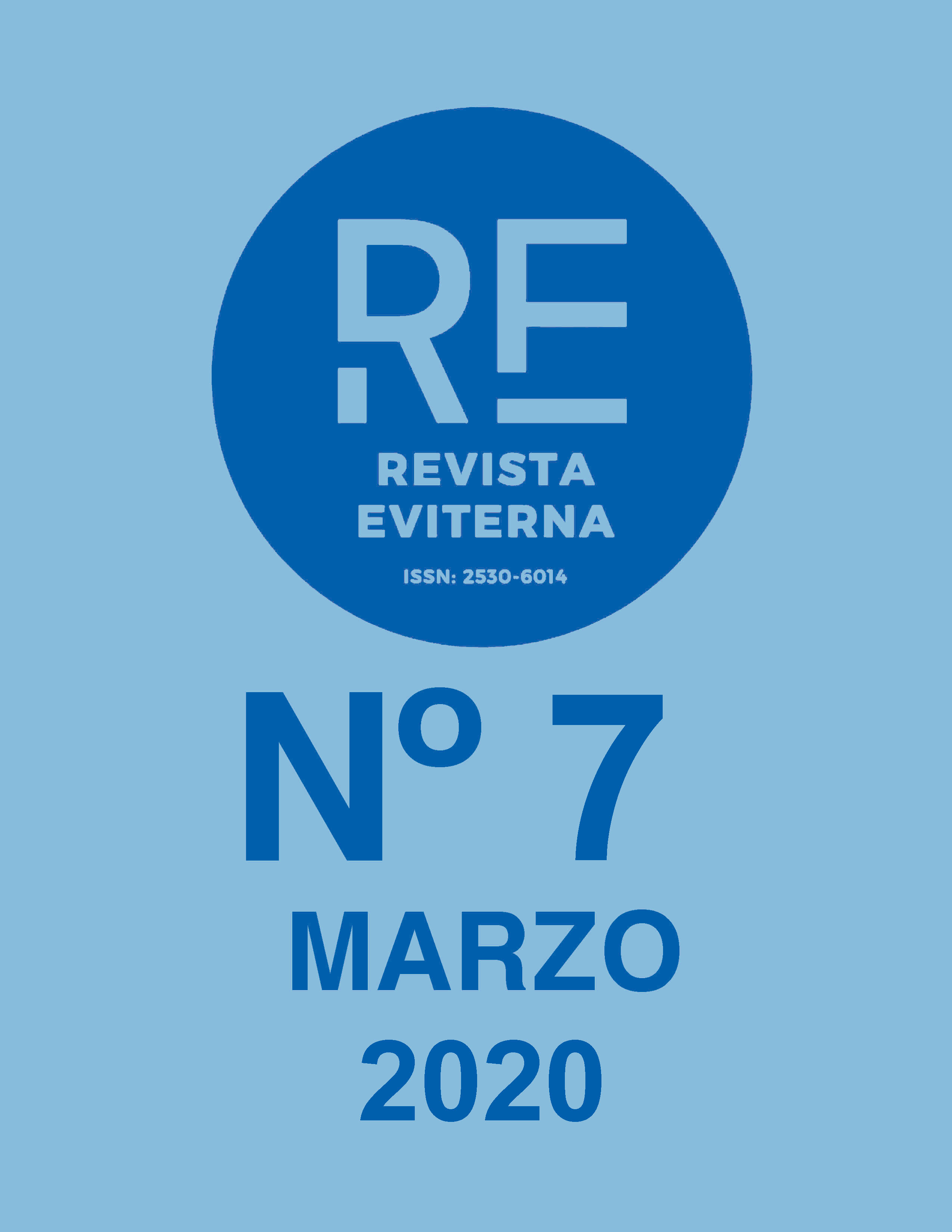A proposal to read the paintings of the dressing room of the Santa Faz of Alicante
DOI:
https://doi.org/10.24310/Eviternare.v0i7.8369Keywords:
Conchillos, history painting, XVIIth century valencian painting, AlicanteAbstract
The oil paintings with scenes of the history of the Alicante’s Santa Faz made by Juan Conchillos Falcó (1641-1711) for the Monastery of Santa Verónica (Alicante) are one of his masterpieces. However, despite their excellent state of preservation, their importance and, particularly, their narrativity, they have hardly been studied. Therefore, in the following pages a new interpretation of the meaning of the same is proposed based on the contemporary sources and the circumstances in which they were done, trying to analyze their meaning and their importance for the reivindication of absolute latry to the Holy Face made by Alicante’s council.
Downloads
Metrics
Publication Facts
Reviewer profiles N/A
Author statements
Indexed in
-
—
- Academic society
- N/A
- Publisher
- Universidad de Málaga
References
Belting, Hans (1997). La vraie image: croire aux images?Paris: Gallimard.
- (1998). Image et culte : une histoire de l’image avant l’époque de l’art.Paris: Les Éditions du Cerf.
Bendicho, Vicente (1960 ed.). Crónica de la muy ilustre, noble y leas ciudad de Alicante: acabada en la misma ciudad, el año del señor 1640. Alicante: Instituto de Estudios Alicantinos.
Biosca i bas, Antoni (2014) “L'antic ofici alacantí de Santa Faç”, La rella, nº27, pp.11-29.
Calabrese, Omar; Stoichita, Victor I (2015). La verónica de Zurbarán. Madrid: Casimiro Libros.
Cañestro Donoso, Alejandro (2015). Arquitectura y programas artísticos en la provincia de Alicante durante la Edad Moderna. Madrid: CSIC.
Cutillas Bernal, Enrique (1995). El patronato de la ciudad de Alicante sobre el Monasterio de la Santa Verónica en la huerta de la ciudad (1518-1804). Tesis doctoral. Universidad de Alicante.
- (1996). “La polémica ilustrada sobre la reliquia de la Santa Faz de Alicante: un ataque a la Compañía de Jesús”, Revista de historia moderna, nº15, 1996.
Esplá Rizo, Rafael (1962). La santísima faz de nuestro señor Jesucristo. Alicante: Imprenta de Juan Gisbert.
Fabiani, Joseph (1763). Disertación histórico-dogmática sobre la sagrada Reliquia de la Ssma. Faz de N.S.J.C. venerada en la Ciudad de Alicante. Alicante: Imprenta Municipal.
Hernández Guardiola, Lorenzo (1976). “Noticias sobre Bussi y Conchillos en Alicante”. Archivo español de arte, vol.49, nº196, p.467.
- (1988). El Camarín de la Santa Faz. Alicante: Ayuntamiento de Alicante.
- (1994). Pintura decorativa barroca en la provincia de Alicante. 3 vols. Alicante: Instituto de Cultura Juan Gil-Albert, vol.3.
Hernández Guardiola, Lorenzo y Sáez Vidal, Joaquín (Coord.) (2006). La Faz de la eternidad. Valencia: Generalitat Valenciana.
Llop, Jaume (1963 ed.). Información ad perpetuam rei memoriam de los milagros ocurridos en la Epifanía de la Santa Faz en Alicante. Alicante: Sucesor de Such Serra.
Maltés, Juan Bautista y López, Lorenzo (1991 ed.). Ilice ilustrada. Historia de la muy noble, muy leal y fidelissima ciudad de Alicante. Alicante: Ayuntamiento.
Martínez Morellá, Vicente (1953). El monasterio de Santa Verónica. Alicante: Ayuntamiento de Alicante, 1953.
Mas i Usó, Pasqual.Justas, academias y convocatorias literarias en la Valencia Barroca (1591-1705). Teoría y práctica de una convención. Valencia: Universidad de Valencia, 1993.
Montojo Montojo, Vicente (2010). “El comercio de Alicante a mitad del siglo XVII según los derechos y sisas locales de 1658-1662 y su predominio sobre el de Cartagena”. Murgentana, nº122, pp.43-66.
Sáez Vidal, Joaquín (1974). El Ayuntamiento de Alicante: historia de su construcción y arquitectura. Alicante: Instituto de estudios alicantinos.
- (1985). La ciudad de Alicante y las formas artísticas de la cultura barroca (1691-1770). Alicante: Instituto Juan Gil Albert.
Sáez Vidal, Joaquín y Martínez García, José Antonio (coord.) (2003). La luz de las imágenes (Orihuela). Valencia: Generalitat Valenciana, 2003.
Sala Seva, Fernando (1989). Devocionario y poesías a la Santa Faz. Ayuntamiento: Comisión para el V centenario de la Santa Faz.
- (1991).La verdad sobre la Santa Faz. Ayuntamiento: Comisión para el V centenario de la Santa Faz.
Stoichita, Victor I. (1996) El ojo místico. Pintura y visión religiosa en el Siglo de Oro español. Madrid: Alianza.
Varela Botella, Santiago (2006). “Arquitectura en Alicante durante la Edad Moderna. La ciudad de los comerciantes, en Hernández Guardiola, Lorenzo y Sáez Vidal, Joaquín. La faz de la eternidad. Valencia: Generalitat Valenciana, pp.24-47.
Viciana, Rafael M.(1502).Libro segundo dela Chronyca dela inclita y coronada ciudad de Valencia y de su reyno. Valencia: Impresso en casa de Jaume Navarro, 1502.
Vidal Bernabé, Inmaculada (1981). La escultura monumental barroca en la Diócesis de Orihuela-Alicante. Alicante: Diputación Provincial, 1981.
- (1990). Retablos alicantinos del Barroco (1600-1780). Alicante: Diputación Provincial, 1990.
Downloads
Published
How to Cite
Issue
Section
License
All the contents published in Revista Eviterna are subject to the Creative Commons Reconocimento-NoComercia-Compartirigual 4.0 license, the full text of which can be found at <http://creativecommons.org/licenses/by-nc-sa/4.0>
They may be copied, used, disseminated, transmitted and publicly exposed, provided that:
The authorship and original source of your publication (Journal, editorial and URL of the work) are cited.
They are not used for commercial purposes.
The existence and specifications of this use license are mentioned.

Copyright is of two kinds: moral rights and patrimonial rights. Moral rights are perpetual, inalienable, inalienable, inalienable, inalienable and imprescriptible prerogatives.
In accordance with copyright legislation, Revista Eviterna recognizes and respects the moral rights of the authors, as well as the ownership of the economic right, which will be transferred to the University of Malaga for dissemination in open access.
The economic rights refer to the benefits obtained by the use or disclosure of the works. Revista Eviterna is published in open access and is exclusively authorized to carry out or authorize by any means the use, distribution, disclosure, reproduction, adaptation, translation or transformation of the work.
It is the responsibility of the authors to obtain the necessary permissions of the images that are subject to copyright.







12.png)



